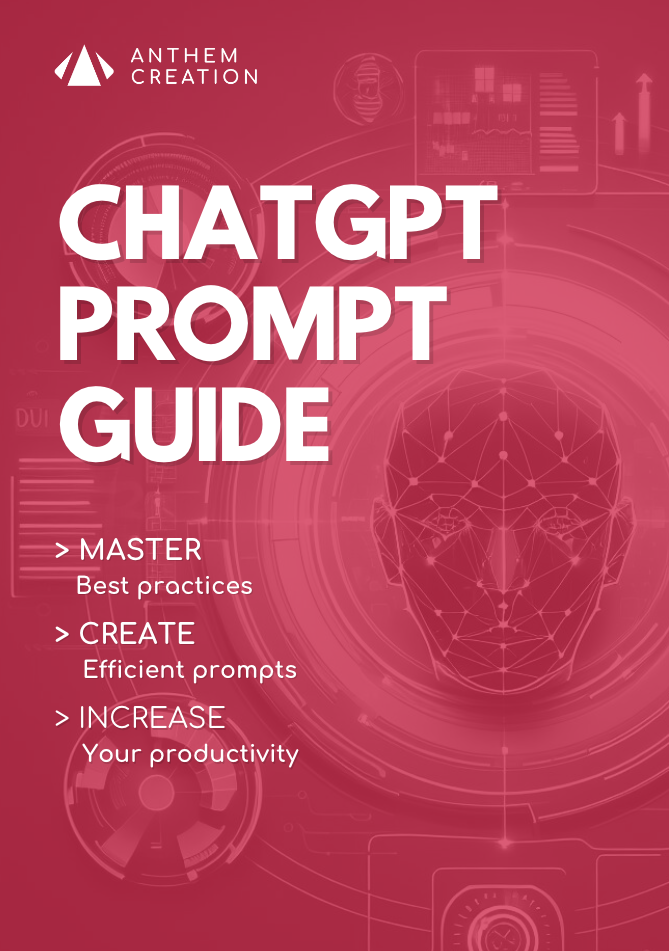After searchGPT OpenAI broke new ground with the Deep Research feature, which stands out for its ability to perform deep, exhaustive searches in record time. This functionality has also been integrated into several other AI tools such as Perplexity, Google Gemini and others that promise to transform the way we access and analyze information.
Listen to the AI podcast :
In brief: Perplexity stands out for its speed cost and accessibility, OpenAI for its depth of analysis, and Gemini for its dynamic interface and advanced visualizations.
What is Deep Research?
It’s an advanced agentic artificial intelligence feature designed to explore, synthesize and present complex information in a structured and understandable way.

It uses sophisticated algorithms to analyze tens, if not hundreds of online sources, and extract the relevant data.
The result is a detailed report that summarizes key information and offers valuable insights.
How Deep Research works
There are several key stages in the process:
- In-depth Analysis: The tool begins by exploring a wide range of online content, including websites, academic articles, specialist publications and databases. This analysis is exhaustive and covers a variety of fields and topics.
- Intelligent synthesis: Once the data has been collected, the AI uses natural language processing (NLP) and machine learning techniques to synthesize the information. It identifies key points, trends and main conclusions, and organizes them in a coherent way.
- Report Generation: AI then builds a structured report that presents the key information clearly and concisely. This report can include tables, graphs and visualizations to aid comprehension.
Benefits of Deep Research
- Speed: Deep Research provides in-depth analysis in minutes, where a human would take several hours.
- Precision: Advanced algorithms guarantee high precision in information extraction and synthesis.
- Accessibility: Generated reports are easy to understand and share, making information accessible to a wide audience.
- Efficiency: By automating the search process, Deep Research frees up time for users, enabling them to concentrate on analysis and decision-making.
Application examples
- Finance: Financial analysts can use Deep Research to obtain detailed reports on market trends, company performance and economic forecasts.
- Marketing: Marketing professionals can analyze consumer behavior, market trends and the effectiveness of advertising campaigns.
- Academic research: Researchers can synthesize hundreds of articles and publications to gain an overview of a specific topic.
- Market analysis: Companies can assess the competition, identify market opportunities and adapt their strategies accordingly.
Comparative: Perplexity vs OpenAI vs Google Gemini
Despite their differences, AI tools like Perplexity, OpenAI and Google Gemini share several common features in their approach to Deep Research:
To help you choose the best AI search tool in 2025, here’s a detailed comparison between Perplexity Deep Research, OpenAI Deep Research and Google Gemini Deep Research.
Key features
| Feature | Perplexity Deep Research | OpenAI Deep Research | Google Gemini Deep Research |
|---|---|---|---|
| Launch date | February 2025 | February 2025 | December 2024 |
| Pricing | Free with 5 queries per day; 20/month for 500 daily queries | $200/month for 100 queries | $20/month (Gemini Advanced) |
| Processing time | Less than 3 minutes per job | 5-30 minutes per query | Generally less than 15 minutes |
| Precision (Humanity’s Last Exam) | 21,1% | Over 21.1% | 6.2% |
| Availability | Web; soon on iOS, Android, Mac | Currently in US, expansion planned | Global via Gemini web app (English only) |
| Research methodology | Executes multiple searches quickly, basic source analysis | Systematic and in-depth, with detailed research methodology section | Very iterative and dynamic, uses live data extraction, annotations and cross-checks |
| Depth of analysis | Provides preliminary insights, but lacks comprehensive data on some indicators | Provides in-depth analysis with comprehensive resource review | Offers very in-depth analysis with strategic recommendations and visualizations |
| Interface and visual features | Simple text report with formatted tables, few interactive visuals | Well-structured report with headers and summary tables, static interface | Dynamic interface with interactive graphics and real-time updates |
| Support tools and features | Utilizes basic report generation tools, lacks advanced visual tools | Utilizes robust web search and document synthesis tools, full citations | Integrates advanced charting, annotation and real-time source checking tools |
| Structure and clarity of results | Report organized with clear sections and tables, but lacks some data points | Report clearly organized with explicit figures and detailed citations | Results structured in layers following a logical progression, with direct strategic recommendations |
| Recommended use case | Ideal for quick preliminary analyses, but less suitable for full market analyses due to incomplete data | Ideal for strategic planning requiring a detailed, static report with a clear methodology | Ideal for decision-makers and analysts requiring a dynamic, transparent and thorough research process, despite longer research time |
Advantages and Disadvantages
Perplexity Deep Research
Benefits:
- Accessibility: Free version with 5 queries per day and affordable Pro version.
- Speed: Processing time of less than 3 minutes per job.
- Precision: Good performance on evaluation benchmarks.
Disadvantages:
- Depth of analysis : Sometimes lacks complete data on certain indicators.
- Interface: Lack of interactive visuals.
See the official page : https://www.perplexity.ai/fr/hub/blog/introducing-perplexity-deep-research
OpenAI Deep Research
Benefits:
- Depth of analysis: In-depth analysis with exhaustive review of resources.
- Structure of results: Well-structured reports with explicit figures and detailed citations.
Disadvantages :
- Pricing: High cost at $200/month for 100 queries.
- Processing time: Slower with a processing time of 5 to 30 minutes per request.
See the official page: https://openai.com/index/introducing-deep-research
Read our article on OpenAI Deep Research: Deep Research : the AI agent that performs complex searches in record time
Google Gemini Deep Research
Benefits:
- Dynamic interface : Interactive graphics and real-time updates.
- Depth of analysis: Highly in-depth analysis with strategic recommendations and visualizations.
Disadvantages:
- Accuracy: Accuracy score lower than competitors.
- Processing time: Moderate processing time of less than 15 minutes.
See the official page: https://blog.google/products/gemini/google-gemini-deep-research/
Concluding
Each AI search tool has its own strengths and weaknesses, and the choice will depend on the user’s specific needs:
- Perplexity Deep Research is ideal for quick, accessible analysis, but may lack depth for complex analysis.
- OpenAI Deep Research is the best choice for in-depth, structured analyses, but at a high cost and with a longer processing time.
- Google Gemini Deep Research offers a dynamic interface and in-depth analysis, but with lower accuracy and moderate processing time.
AI NEWSLETTER
Stay on top of AI with our Newsletter
Every month, AI news and our latest articles, delivered straight to your inbox.

CHATGPT prompt guide (EDITION 2024)
Download our free PDF guide to crafting effective prompts with ChatGPT.
Designed for beginners, it provides you with the knowledge needed to structure your prompts and boost your productivity
With this ebook, you will:
✔ Master Best Practices
Understand how to structure your queries to get clear and precise answers.
✔ Create Effective Prompts
The rules for formulating your questions to receive the best possible responses.
✔ Boost Your Productivity
Simplify your daily tasks by leveraging ChatGPT’s features.
Similar posts
Deep Research : The AI agent that carries out complex searches in record time
Deep Research from OpenAI presents itself as a major breakthrough in the field of AI agents. It’s not just another tool, but a true AI agent capable of conducting in-depth …
Google NotebookLM : The essential AI notebook for writing, searching and managing information
Imagine a space where all your notes, research documents and ideas converge harmoniously, enabling an intuitive and efficient search. This is the promise of NotebookLM, the latest addition to Google …
Google Search, SearchGPT, Perplexity.ai: Which is the best search engine?
Today, we’re off to discover these three search giants: Google Search, the must-have; Perplexity.ai, the AI search tool that relies on reliable and transparent sources; and the new SearchGPT, the …


